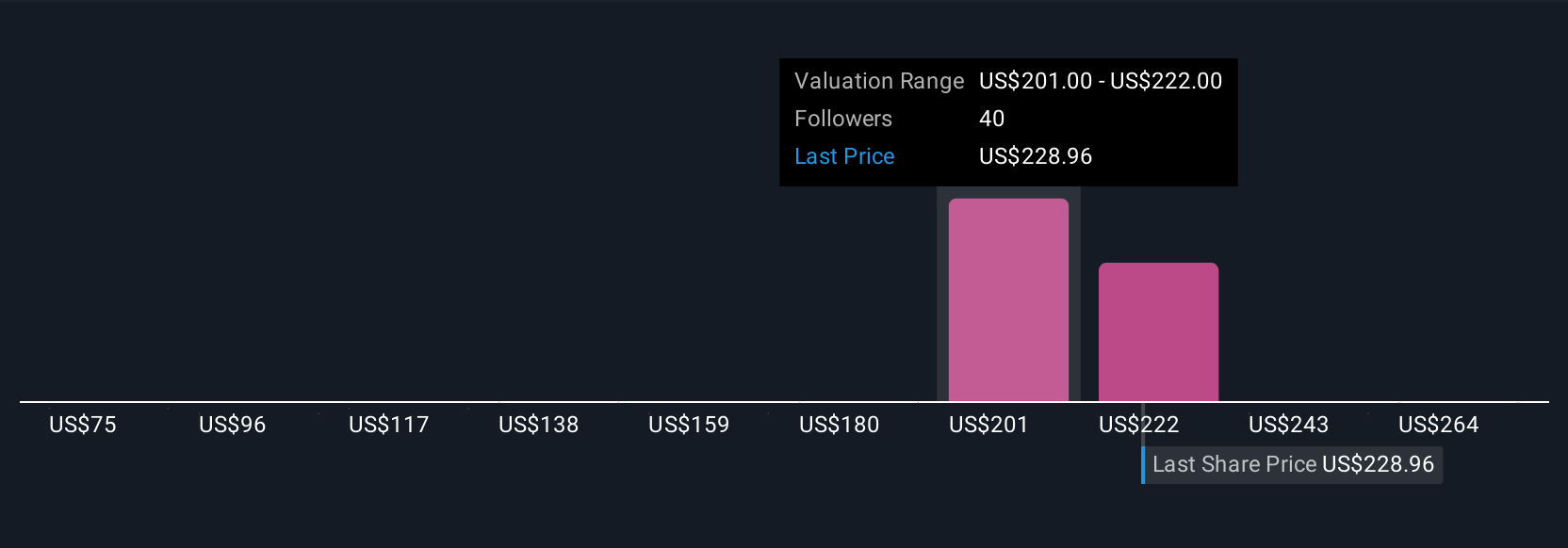AI in Manufacturing: U of T partnership with South Korean institutions to enhance efficiency and performance across the value chain – U of T Engineering News –

International Partnership Leverages Artificial Intelligence for Sustainable Manufacturing in Alignment with UN SDGs
Introduction: A Strategic Alliance for Sustainable Industrialization
An international partnership has been established between the University of Toronto (U of T) Engineering and several South Korean institutions to advance sustainable manufacturing practices through the application of Artificial Intelligence (AI). This collaboration, which includes the Korea Institute for Advancement of Technology (KIAT), the Korea Electronics Technology Institute (KETI), and the Korea Automotive Technology Institute (KATECH), directly supports the achievement of the United Nations Sustainable Development Goals (SDGs), particularly SDG 9 (Industry, Innovation, and Infrastructure) and SDG 17 (Partnerships for the Goals).
The partnership was formalized with the inauguration of the AI in Manufacturing (AIM) centre at U of T, one of eight Global Industrial Technology Cooperation Centers (GITCC) worldwide and the sole centre in Canada. This initiative aims to embed sustainability and efficiency throughout the manufacturing value chain.
Centre Leadership and Mandate
The AIM GITCC is structured to provide comprehensive expertise across the manufacturing spectrum, aligning with goals for technological enhancement and sustainable industrial processes.
- Director: Professor Chi-Guhn Lee (MIE)
- Co-directors:
- Professor Chul Park (MIE)
- Professor Yu Sun (MIE)
- Professor Seungjae Lee (CivMin)
The leadership team’s collective expertise spans material synthesis, data analytics, and AI, enabling a holistic approach to optimizing manufacturing from raw material sourcing to final quality control.
Advancing SDG 9: Industry, Innovation, and Infrastructure
The core mission of the AIM centre is to upgrade industrial capabilities through technological innovation, a key target of SDG 9. By applying machine learning and mathematical optimization, the initiative seeks to retrofit industries for enhanced sustainability and efficiency.
Case Study: Automotive Assembly Optimization
A primary application involves optimizing complex processes, such as automotive assembly lines. The research addresses challenges like sequencing hundreds of welding points within a constrained “tick time” of 37 seconds per vehicle. The optimization models account for multiple variables to find the most efficient solution, thereby contributing to sustainable industrialization (Target 9.4) by:
- Minimizing resource allocation (equipment, floor space).
- Reducing operational costs, including fuel consumption.
- Optimizing worker schedules and equipment usage.
The integration of AI, including image processing from monitoring cameras and natural language processing, allows for end-to-end process management. This enhances scientific research and upgrades the technological capabilities of industrial sectors (Target 9.5).
Promoting SDG 12: Responsible Consumption and Production
The partnership strongly promotes SDG 12 by developing systems that ensure sustainable production patterns. By optimizing the entire manufacturing value chain, the AIM initiative aims to achieve the sustainable management and efficient use of natural resources (Target 12.2) and substantially reduce waste generation (Target 12.5).
Key Contributions to Sustainable Production:
- Material Synthesis: Optimizing the use of raw materials from the very first stage.
- Process Automation: Reducing energy consumption and process time through intelligent robotics and automation.
- System Monitoring and Control: Using AI for real-time monitoring to prevent errors, reduce defective products, and minimize material waste.
These improvements are expected to lower environmental impact and costs across manufacturing-intensive sectors, including automotive and consumer electronics.
Fostering SDG 17: Partnerships for the Goals
This initiative is a testament to the power of global partnerships in achieving sustainable development, directly embodying the spirit of SDG 17. The collaboration between Canadian academia and South Korean technology institutes creates a critical hub for international cooperation on science, technology, and innovation (Target 17.6).
Sungjin Baik, Director General for International Cooperation at KIAT, noted the strategic opportunity to co-develop technologies that will define the future of key industries. This multi-stakeholder partnership (Target 17.16) is designed to enhance research impact and create shared economic value, strengthening the economies of both Canada and South Korea through sustainable innovation.
Supporting SDG 8: Decent Work and Economic Growth
By enhancing industrial efficiency and competitiveness, the AIM initiative contributes to sustained and sustainable economic growth (SDG 8). The project aims to achieve higher levels of economic productivity through technological upgrading and innovation (Target 8.2), creating long-term value and reinforcing the stability of the manufacturing sectors in both partner nations.
1. Which SDGs are addressed or connected to the issues highlighted in the article?
- SDG 9: Industry, Innovation, and Infrastructure: The article focuses on leveraging AI to innovate and enhance manufacturing processes, which is central to this goal.
- SDG 8: Decent Work and Economic Growth: The initiative aims to improve efficiency and lower costs, which boosts economic productivity and creates economic value.
- SDG 12: Responsible Consumption and Production: By optimizing manufacturing and supply chains, the project promotes more efficient use of resources like raw materials and fuel.
- SDG 17: Partnerships for the Goals: The entire initiative is founded on an international partnership between Canadian and South Korean institutions to achieve technological and economic goals.
2. What specific targets under those SDGs can be identified based on the article’s content?
SDG 9: Industry, Innovation, and Infrastructure
-
Target 9.4: “By 2030, upgrade infrastructure and retrofit industries to make them sustainable, with increased resource-use efficiency and greater adoption of clean and environmentally sound technologies and industrial processes…”
Explanation: The article describes the use of AI to “enhance manufacturing across the value chain” and “improve efficiency.” This represents a direct effort to upgrade industrial processes with advanced technology. The optimization example, which includes the “cost of fuel,” points towards increasing resource-use efficiency. -
Target 9.5: “Enhance scientific research, upgrade the technological capabilities of industrial sectors in all countries… and encourage innovation…”
Explanation: The creation of the “AI in Manufacturing (AIM)” research center is a direct implementation of this target. The article states its purpose is to “leverage AI to enhance manufacturing” and “co-develop technologies that will define the future of key industries,” which is a clear effort to enhance scientific research and upgrade technological capabilities in the manufacturing sector.
SDG 8: Decent Work and Economic Growth
-
Target 8.2: “Achieve higher levels of economic productivity through diversification, technological upgrading and innovation…”
Explanation: The project’s core mission is to “improve efficiency and lower costs across several manufacturing-intensive sectors” through technological innovation (AI). This directly contributes to higher economic productivity, with the article explicitly stating the goal is to “create value for the economies of both Canada and South Korea.”
SDG 12: Responsible Consumption and Production
-
Target 12.2: “By 2030, achieve the sustainable management and efficient use of natural resources.”
Explanation: The article explains that the AI-driven optimization covers the entire manufacturing process, “from raw materials all the way through to quality control.” By improving the efficiency of this entire chain and considering factors like the “cost of fuel,” the initiative promotes a more efficient and sustainable use of natural resources.
SDG 17: Partnerships for the Goals
-
Target 17.6: “Enhance North-South, South-South and triangular regional and international cooperation on and access to science, technology and innovation…”
Explanation: The article is entirely about an “international partnership between U of T Engineering and several South Korean institutions” (KIAT, KETI, KATECH). This collaboration to establish the AIM research center is a perfect example of international cooperation on science and technology.
3. Are there any indicators mentioned or implied in the article that can be used to measure progress towards the identified targets?
SDG 9: Industry, Innovation, and Infrastructure
- Implied Indicator for Target 9.4: Improvements in resource efficiency. The article mentions optimizing based on the “cost of fuel,” implying that a reduction in fuel consumption per unit of production could be a measurable indicator.
- Implied Indicator for Target 9.5: Investment in research and technology. The establishment of the “AI in Manufacturing (AIM)” center, one of eight “Global Industrial Technology Cooperation Centers (GITCC),” serves as a concrete indicator. The number of “proposals for individual research projects” funded through the initiative would be another quantifiable measure of progress.
SDG 8: Decent Work and Economic Growth
- Implied Indicator for Target 8.2: Manufacturing productivity. The article gives a specific example of an “automotive assembly line designed to produce one new car every 37 seconds.” Improvements in this “tick time” or other efficiency metrics would directly measure progress in economic productivity.
SDG 12: Responsible Consumption and Production
- Implied Indicator for Target 12.2: Material and energy consumption. The system’s ability to optimize the entire value chain “from raw materials” suggests that the material footprint or domestic material consumption could be measured and improved. Reduced fuel consumption, as mentioned for SDG 9, is also a relevant indicator here.
SDG 17: Partnerships for the Goals
- Implied Indicator for Target 17.6: Number and scope of international technology partnerships. The article explicitly names the partnership between U of T and three South Korean institutions (KIAT, KETI, KATECH). The existence of the “AIM GITCC” itself is a key indicator of a functioning international science and technology agreement.
4. SDGs, Targets and Indicators Table
| SDGs | Targets | Indicators Identified in the Article (Implied) |
|---|---|---|
| SDG 9: Industry, Innovation, and Infrastructure | 9.4: Upgrade industries to make them sustainable and increase resource-use efficiency. | Reduction in resource consumption, such as lower “cost of fuel” per unit produced. |
| SDG 9: Industry, Innovation, and Infrastructure | 9.5: Enhance scientific research and upgrade technological capabilities of industrial sectors. | Establishment of the “AI in Manufacturing (AIM)” research center; Number of research projects funded. |
| SDG 8: Decent Work and Economic Growth | 8.2: Achieve higher levels of economic productivity through technological upgrading and innovation. | Improvement in manufacturing efficiency metrics, such as reducing the “tick time” on an assembly line (e.g., producing a car in less than 37 seconds). |
| SDG 12: Responsible Consumption and Production | 12.2: Achieve the sustainable management and efficient use of natural resources. | Reduced consumption of “raw materials” and “fuel” across the manufacturing value chain. |
| SDG 17: Partnerships for the Goals | 17.6: Enhance international cooperation on and access to science, technology and innovation. | The existence of the international partnership itself (U of T with KIAT, KETI, KATECH) and the establishment of the “Global Industrial Technology Cooperation Center (GITCC)”. |
Source: news.engineering.utoronto.ca

What is Your Reaction?
 Like
0
Like
0
 Dislike
0
Dislike
0
 Love
0
Love
0
 Funny
0
Funny
0
 Angry
0
Angry
0
 Sad
0
Sad
0
 Wow
0
Wow
0












































































